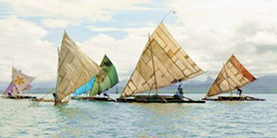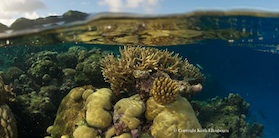Shark Conservation

The disappearance of sharks from the worlds’ seas and oceans is having ramifications on the health of the environments they are becoming extinct from. Educative activities within local communities and educational ecotourism activities surrounding a shark feeding site in Beqa Lagoon, operated by the Beqa Lagoon Resort is contributing to awareness of the importance of sharks and their current situation. These activities build the basis of protection and conservation efforts for sharks and their habitats.
Shark Conservation
As apex and meso-predators, sharks fulfil a key role in maintaining the balance of the ocean by keeping other populations in check. However, due to slow growth, late maturity and few offspring sharks are extremely vulnerable to exploitation. Furthermore, human impact through overfishing, excessive bycatch, shark-finning and habitat destruction is threatening many shark species suffering documented declines.
The Beqa Lagoon area is well known for its thriving and diverse shark population, the shark feeding dives in the area and the local culture honouring the shark gods. Due to the overarching significance of sharks in this area there is a vital and urgent need to actively advocate for their conservation. With research documenting the sharks’ behaviour, insights into their ecology and the potential impact of feeding activities will be gained. This enhances our understanding of their behaviour and by sharing the information with both the local community and visitors, through education and awareness programmes, better management of diving activity will help alleviate further potential detrimental impact to the sharks and the environment.
Tiger shark behavioural ecology research
The monitoring program, ongoing since March 2016, collates data about the population structure of all shark species aggregated at the feeding site.
As Tiger sharks are highly elusive creatures, research on them is still in its infancy and charting all available information about their behaviour is imperative. By determining the sex ratio, length and community structure of the Tigers, and creating a photographic identification guide for them, we can create a comprehensive standard for individual recognition. Through recognition of individuals, the behavioural patterns of the sharks and their interaction in the area and at the feeding sites are recorded. Tigers’ population are placed into co-occurring groups for describing the residence patterns and behaviour of individual and these groups. Furthermore, the premise that shark-feeding increases the fidelity of Tiger sharks to the site is tested.



